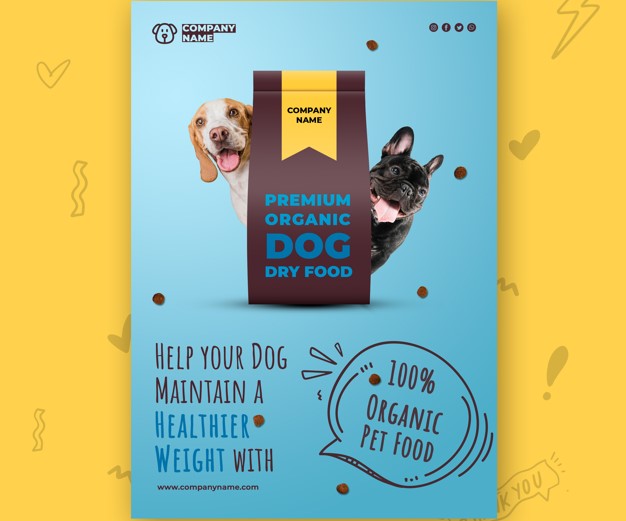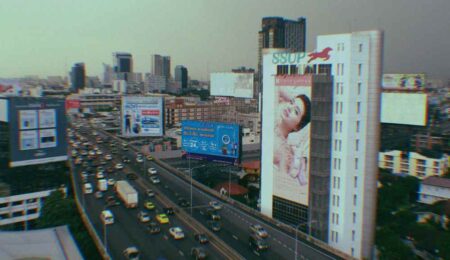A Strategic Guide to Cost-Effective Pet Food Packaging in Thailand
In Thailand’s dynamic and competitive pet care market, pet food packaging Thailand is a critical business decision that sits at the intersection of cost, preservation, and consumer appeal. For brands, especially emerging ones and small to medium enterprises (SMEs), achieving cost-effective packaging is not about choosing the cheapest option available. It is a strategic calculation to maximize value—ensuring product integrity, meeting consumer expectations, and optimizing logistics, all while protecting the bottom line. In a price-sensitive yet quality-conscious market, the “smart sack” balances economic constraints with the demanding realities of Thailand’s climate and retail landscape.
The pursuit of cost-effectiveness is shaped by several key Thai-specific factors: the relentless heat and humidity that threaten product freshness, the explosive growth of e-commerce, and the competitive pressure from both international giants and local producers. Navigating this environment requires a multifaceted approach focused on intelligent material selection, operational efficiency, and strategic design.
The Pillars of Cost-Effective Pet Food Packaging
1. Material Intelligence: The Barrier vs. Budget Balance
The foundation of cost-effectiveness lies in selecting the right material for the product’s specific needs. Over-engineering with premium, high-barrier laminates for a short-shelf-life treat is a common source of wasted capital. Conversely, under-engineering can lead to spoiled food, customer complaints, and brand damage.
For standard dry kibble, robust multi-wall polypropylene (BOPP) or polyethylene (PE) bags often provide a sufficient barrier against moisture and contaminants at a lower cost than complex metalized laminates. The key is to conduct rigorous shelf-life testing to determine the minimum sufficient barrier required. For more sensitive products with higher fat content, a simpler 3-layer laminate might offer the necessary protection against oxidative rancidity without the cost of a 5-layer or 7-layer structure. This “fit-for-purpose” approach prevents paying for unnecessary levels of security.
2. Design and Operational Efficiency
Smart design directly translates to cost savings. This includes:
- Standardization: Using standard bag sizes, gusset widths, and pallet patterns can drastically reduce costs. Custom die lines and unique shapes often require specialized tooling and result in greater material waste, driving up the price per unit.
- Light-weighting: Advances in materials science enable manufacturers to use thinner-gauge films that retain strength and barrier properties. Reducing the plastic’s grammage (thickness) by a few microns can save a significant amount per thousand bags, with a substantial impact on annual material costs.
- Prudent Printing: While high-quality graphics are essential for shelf appeal, limiting the number of printing colours and avoiding complex graphic effects, such as gradients, can reduce printing plate costs and setup time. A smart, bold design with three colours can be more impactful and cost-effective than a full-process print that adds little value.
3. Mastering the Supply Chain and Logistics
The true cost of packaging extends far beyond the supplier’s price per bag. Logistics is a major, often overlooked, expense.
- Local Sourcing: Thailand has a well-developed plastics and packaging industry. Sourcing materials from local Thai manufacturers slashes import duties, reduces lead times, and minimizes transportation costs. A reliable local partner can also offer more flexible order quantities and faster problem resolution.
- E-commerce Readiness: Packaging must be designed to survive the “last mile,” which in Thailand often involves motorbike delivery. A cost-effective e-commerce package is slightly more robust to prevent punctures, eliminating the need for—and the cost of—an oversized secondary shipping box and excessive protective fill. Investing a little more in the primary bag’s puncture resistance can save a lot on overall shipping materials.
- Cube Optimization: Designing bags to be compact and efficiently shaped maximizes the number of units that can fit on a pallet and in a shipping container. Reducing “air” in the packaging directly lowers freight costs per unit, a critical factor for profitability.
4. The Strategic Role of Value-Added Features
Some features, while adding a small upfront cost, deliver significant value that justifies the investment.
- Resealable Zippers: While adding a minor cost, quality zippers are no longer a luxury but an expectation for most Thai consumers. It preserves freshness after opening, reducing food waste and enhancing customer satisfaction, thereby fostering brand loyalty and repeat purchases.
- Handles: For bags over 5kg, integrated carrying handles are crucial in a market where many consumers transport goods via motorcycle. This simple feature improves usability and can be a deciding factor in a customer’s choice between two similarly priced brands.
5. The Sustainability-Cost Nexus
Increasingly, sustainability and cost-effectiveness are converging. While advanced compostable materials can be expensive, several eco-friendly strategies are also cost-savers:
- Source Reduction: The most direct method is simply using less material through lightweighting and right-sizing, which reduces both material costs and the environmental footprint.
- Mono-Materials: Developing packaging from a single type of plastic (e.g., all-PE) is a growing trend. These packages are often cheaper to produce than complex multi-layer laminates and are more readily recyclable, appealing to the eco-conscious consumer without a premium price tag.
- Refill Systems: Offering a large, cost-effective “refill” bag designed to be poured into a reusable container at home is a powerful strategy. The refill pouch uses significantly less material than a rigid stand-up bag with all its features, offering a lower price point for consumers and a lower per-unit cost for the brand.
Conclusion
In Thailand’s bustling pet food sector, cost-effective packaging is a sophisticated dance of precision and strategy. It demands a holistic view that connects material science with supply chain logistics, and smart design with consumer psychology. The brands that thrive are those that view their packaging not as a mere expense, but as a vital component of their value proposition. By focusing on intelligent material selection, operational efficiencies, and strategic feature inclusion, Thai pet food companies can create packaging that safeguards their product, wins customer loyalty, and, most importantly, protects their profitability in an increasingly competitive arena.
Frequently Asked Questions (FAQs)
1. What is the most cost-effective material for dry pet food packaging in Thailand?
For most standard dry kibble, multi-layer polypropylene (BOPP) or polyethylene (PE) bags offer the best balance of cost and performance. They provide a sufficient barrier against Thailand’s humidity at a lower price point than more complex metalized or aluminum laminates. The key is to work with your supplier to determine the minimum barrier level needed to achieve your desired shelf life, avoiding over-engineering.
2. How can I reduce packaging costs without making my product look cheap?
Focus on smart design, not just cost-cutting. Use a limited colour palette effectively with bold, clean graphics. Ensure your bag has a high-quality, reliable zipper and a sturdy feel—these tactile elements signal quality more than a complex, expensive photo. A well-executed, simple design on a standard-sized bag often appears more professional and trustworthy than a poorly printed, custom-shaped bag.
3. Are there hidden costs with “cheap” packaging I should know about?
Absolutely. The initial low price can be misleading and lead to:
- Machinery Downtime: Inconsistent or low-quality film can jam automated filling and sealing machines, halting production and costing thousands in lost productivity.
- Product Loss: Bag failures during transport or storage lead to spoiled product, customer returns, and brand damage.
- Logistics Issues: Weak bags may require double-bagging or expensive over-boxing for e-commerce, negating any initial savings.
Always test samples rigorously for seal strength, puncture resistance, and durability.
4. Is sustainable packaging always more expensive?
Not necessarily. The most effective sustainable practices are also cost-savers. Source reduction (using less material) and light-weighting directly lower your material bill. Designing a mono-material package can be cheaper than a multi-layer laminate and is more recyclable. The most cost-effective sustainable strategy is often a large-format refill bag, which uses minimal material and offers a lower price point to consumers.
5. How important is a local Thai supplier for cost-effectiveness?
Extremely important. A local supplier minimizes shipping costs and lead times, allows for more flexible order quantities, and eliminates import duties. They also have a better understanding of the local market needs, climate challenges, and retail requirements. This proximity fosters a partnership that can lead to collaborative problem-solving and innovation, all of which contribute to long-term cost efficiency and supply chain resilience.


